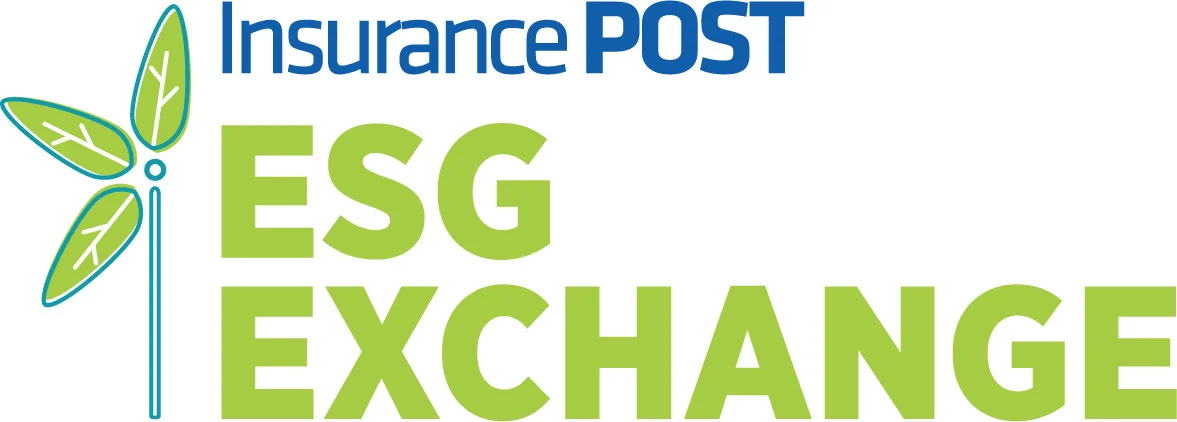
Blog: Insurtech – the power to make ESG happen

The Insurtech domain will be the driving force behind ESG for the insurance sector, writes Sam Evans, founding partner of Eos Venture Partners, a strategic insurtech venture capital fund.
There is a significant overlap between insurance, insurtech and environmental, social and governance issues.
Insurance offers protection in the event of natural catastrophes, increases economic resilience, provides a safety net in the event of injury or death, and improves health and wellbeing. Meanwhile, many of the key aspects of ESG are integrally linked to technology and data, as they naturally fall within the insurtech domain. Whether it is closing the protection gap, improving quality of care, engaging with under-served populations, offering parametric solutions or leveraging geospatial imagery and big data sets, insurtech is going to play a key part in driving the industry forward.
Insurtech will have an important role in closing the global protection gap, which estimated to have increased to $1.24tn (£0.9tn) in 2020, according to Swiss Re, due to factors such as growing environmental risks from more extreme weather events. The issue impacts upon both developed and developing markets. So, for example, four out of five US homes lack flood insurance, while insurance and savings still meet less than 10% of the population’s protection needs in emerging economies.
In addition, more and more people are working in the gig economy – a free market system in which temporary positions are common and organizations hire independent workers for short-term commitments – and lack access to affordable cover, given that the traditional products are not fit for purpose and the nature of the risk is often misunderstood and, therefore, mispriced due to the reliance on outdated risk factors like credit ratings.
Emerging technology solutions
Insurtech provides emerging technology solutions to these problems, allowing for real-time monitoring and the development of risk mitigation, prevention strategies and disaster recovery plans. Technology also allows insurers to offer affordable, tailored and usage-based coverage, and to access new demographics – which were previously difficult to reach – through embedded solutions such as leveraging the mobile banking infrastructure.
One company, for example, leverages insurance to improve wellness and health, including a risk management platform and related insurance coverage for amateur sports organisations. This helps to mitigate against the risk of injuries, optimises return to play, assesses the impact of concussion, and allows reporting and management of abuse.
Insurtech companies also support improved product design, including parametric solutions that enable an integrated process, increase coverage, lower costs and increase efficiency including claims settlement. For example, parametric insurance increases the robustness of agriculture supply chains, guaranteeing pay-outs in the event of a supply chain failure or a weather event that causes damage, particularly in emerging markets.
Insurtech companies also support improved product design, including parametric solutions that enable an integrated process, increase coverage, lower costs and increase efficiency including claims settlement
Research by Allianz indicates that ESG data can also be used to enhance underwriting, through the identification and application of specific predictive ESG indicators. For example, the research found that higher-rated ESG firms were less likely to suffer incidents such as workplace-related accidents, reputational damage or fines.
Environment
There are also a growing number of insurtechs targeting environmental issues, green innovation and carbon emissions. When it comes to the environment, geospatial analytics can assess the impact of natural catastrophes, enhance resilience, and develop mitigation and disaster recovery plans. Global Surface Intelligence is one example of how innovative technology solutions can mitigate environmental risks. Its platform aggregates satellite imagery and performs image processing, using machine learning and predictive analytics to provide insights into natural resource management that can inform sustainable practice. Kita Earth is another example, looking to create insurance solutions for the voluntary carbon market.
There’s no doubt that new technology can help the insurance industry be a force for good in the world. At Eos, our goal is to positively impact 500 million people over the next 10 years by integrating ESG-driven factors into investment decisions.

Post’s ESG Exchange
This article is part of Post’s ESG Exchange from 7 to 18 March featuring free to access webinars, blogs and interviews focusing on ESG.
Today ESG is a powerful tool in the insurance industry, presenting both risks and opportunities for businesses. Register now to watch any of the ESG focused webinars, and have the opportunity to explore and read future content online.
- What do SMART environmental goals look like for the insurance industry?
- Implementing ESG practices across the insurance supply chain.
- What are some of the challenges in creating a more diverse workforce?
- Which area of business should you focus on first in implementing the ESG Agenda
- Will ESG reputation end up being one of the top attractions for insurers in terms of investments?
To register, please click here
Only users who have a paid subscription or are part of a corporate subscription are able to print or copy content.
To access these options, along with all other subscription benefits, please contact info@postonline.co.uk or view our subscription options here: https://subscriptions.postonline.co.uk/subscribe
You are currently unable to print this content. Please contact info@postonline.co.uk to find out more.
You are currently unable to copy this content. Please contact info@postonline.co.uk to find out more.
Copyright Infopro Digital Limited. All rights reserved.
As outlined in our terms and conditions, https://www.infopro-digital.com/terms-and-conditions/subscriptions/ (point 2.4), printing is limited to a single copy.
If you would like to purchase additional rights please email info@postonline.co.uk
Copyright Infopro Digital Limited. All rights reserved.
You may share this content using our article tools. As outlined in our terms and conditions, https://www.infopro-digital.com/terms-and-conditions/subscriptions/ (clause 2.4), an Authorised User may only make one copy of the materials for their own personal use. You must also comply with the restrictions in clause 2.5.
If you would like to purchase additional rights please email info@postonline.co.uk








